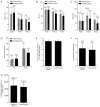The preventive effect of Chinese herbal preparation Xuebijing against hyperactive inflammation after hepato-pancreato-biliary surgery
- PMID: 31700917
- PMCID: PMC6803202
- DOI: 10.21037/atm.2019.07.78
The preventive effect of Chinese herbal preparation Xuebijing against hyperactive inflammation after hepato-pancreato-biliary surgery
Abstract
Background: Hepato-pancreato-biliary (HPB) surgery is a primary treatment for benign and malignant diseases of the liver, biliary tract, and pancreas. Hyperactive inflammation has been indicated as a critical risk factor of post-operation death after HPB surgery. Xuebijing is an anti-inflammatory intravenous herbal preparation made from traditional Chinese medicines. Emerging evidence has implicated a protective role of Xuebijing against hyperactive inflammation.
Methods: A retrospective cohort study was conducted. We analyzed a total of 638 cases of HPB surgery, including hepatectomy, Whipple's surgery, and surgeries for cholelithiasis, which were divided into a Xuebijing treatment group and a conventional treatment group according to whether they were treated with Xuebijing injection or not. Clinical data related to liver function and inflammation were compared between the two groups after operation, including liver function index, white blood cell (WBC) count, neutrophil percentage (NE%), C-reactive protein (CRP), serum interleukin-6 (IL-6), body temperature, mortality, incidence of adverse reaction, length of postoperative hospital stay, and hospitalization cost.
Results: Xuebijing injection was found to decrease the levels of inflammatory markers in the blood significantly, including WBC, NE%, CRP, IL-6, and reduce the incidence of postoperative fever without prolonging in-hospital length or increasing cost compared to the conventional treatment group. Moreover, our data demonstrated that Xuebijing injection did not impact liver function after hepatectomy.
Conclusions: These results suggest that Xuebijing injection alleviates hyperactive inflammation caused by HPB surgery, and support the application of Xuebijing injection as a safe therapeutic approach against hyperactive inflammation in patients with HPB surgery.
Keywords: Hepato-pancreato-biliary surgery (HPB surgery); Xuebijing; hyperactive inflammation.
2019 Annals of Translational Medicine. All rights reserved.
Conflict of interest statement
Conflicts of Interest: The authors have no conflicts of interest to declare.
Figures




Similar articles
-
[Effect of Xuebijing injection on postoperative inflammatory response in patients after hepatobiliary and pancreatic surgeries: a retrospective cohort study].Zhonghua Wei Zhong Bing Ji Jiu Yi Xue. 2018 Oct;30(10):983-986. doi: 10.3760/cma.j.issn.2095-4352.2018.010.016. Zhonghua Wei Zhong Bing Ji Jiu Yi Xue. 2018. PMID: 30439322 Clinical Trial. Chinese.
-
[Effect of Xuebijing on inflammatory response and prognosis in patients with septic shock].Zhonghua Wei Zhong Bing Ji Jiu Yi Xue. 2020 Apr;32(4):458-462. doi: 10.3760/cma.j.cn121430-20200401-00333. Zhonghua Wei Zhong Bing Ji Jiu Yi Xue. 2020. PMID: 32527353 Clinical Trial. Chinese.
-
[The protective effect of Xuebijing injection pretreatment on hepatic ischemia reperfusion injury and coagulopathy after excision of liver cancer].Zhonghua Wei Zhong Bing Ji Jiu Yi Xue. 2013 Dec;25(12):743-8. Zhonghua Wei Zhong Bing Ji Jiu Yi Xue. 2013. PMID: 24620386 Clinical Trial. Chinese.
-
Prevention of Incisional Hernia after Open Hepato-Pancreato-Biliary Surgery: A Systematic Review.Dig Surg. 2022;39(1):6-16. doi: 10.1159/000521169. Epub 2021 Dec 7. Dig Surg. 2022. PMID: 34875657
-
The application and prospection of augmented reality in hepato-pancreato-biliary surgery.Biosci Trends. 2023 Jul 11;17(3):193-202. doi: 10.5582/bst.2023.01086. Epub 2023 Jun 26. Biosci Trends. 2023. PMID: 37357403 Review.
Cited by
-
Traditional Chinese medicine network pharmacology study on exploring the mechanism of Xuebijing Injection in the treatment of coronavirus disease 2019.Chin J Nat Med. 2020 Dec;18(12):941-951. doi: 10.1016/S1875-5364(20)60038-3. Chin J Nat Med. 2020. PMID: 33357725 Free PMC article.
-
The preventive effect of Xuebijing injection against cytokine storm for severe patients with COVID-19: A prospective randomized controlled trial.Eur J Integr Med. 2021 Feb;42:101305. doi: 10.1016/j.eujim.2021.101305. Epub 2021 Jan 30. Eur J Integr Med. 2021. PMID: 33552315 Free PMC article. Clinical Trial.
-
COVID-19 treatment: close to a cure? A rapid review of pharmacotherapies for the novel coronavirus (SARS-CoV-2).Int J Antimicrob Agents. 2020 Aug;56(2):106080. doi: 10.1016/j.ijantimicag.2020.106080. Epub 2020 Jul 4. Int J Antimicrob Agents. 2020. PMID: 32634603 Free PMC article. Review.
-
Examining the effector mechanisms of Xuebijing injection on COVID-19 based on network pharmacology.BioData Min. 2020 Oct 16;13:17. doi: 10.1186/s13040-020-00227-6. eCollection 2020. BioData Min. 2020. PMID: 33082858 Free PMC article.
-
Xuebijing Administration Alleviates Pulmonary Endothelial Inflammation and Coagulation Dysregulation in the Early Phase of Sepsis in Rats.J Clin Med. 2022 Nov 11;11(22):6696. doi: 10.3390/jcm11226696. J Clin Med. 2022. PMID: 36431172 Free PMC article.
References
LinkOut - more resources
Full Text Sources
Research Materials
Miscellaneous
